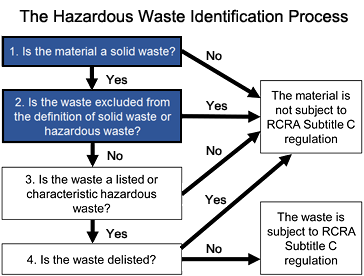The Only Guide for Reclaim Waste
Some Known Factual Statements About Reclaim Waste
Table of ContentsThe Greatest Guide To Reclaim WasteSome Known Facts About Reclaim Waste.Reclaim Waste for BeginnersReclaim Waste - An OverviewSome Known Incorrect Statements About Reclaim Waste
Domestic sewage waste refers to the waste and items from a household septic tank. The correct management and disposal of residential sewer waste require liquid waste to be moved to a sewer therapy plant where the appropriate approaches and equipment are applied to detoxify and dispose of waste.
Commercial waste typically includes possible threats, such as combustible products or a mixture of liquid and solid waste items, and calls for a more innovative and in-depth disposal procedure. The disposal of business waste commonly involves the filtering of waste prior to transport to ensure safe and appropriate disposal. Hazardous waste is created from by-products and overflow of commercial procedures and manufacturing.
This kind of waste can not utilize the exact same sewage monitoring transport or procedures as septic or business fluids. The hazardous waste administration procedure calls for the examination and screening of liquid waste before it undergoes the disposal procedure (industrial wastewater treatment). Runoff waste is the fluid waste that originates from drainage and excess stormwater in very inhabited locations or cities
Overflow waste can cause contamination and flooding if not taken care of properly. Ensuring proper waste monitoring can protect against catastrophes and minimize environmental harm.
Things about Reclaim Waste
Contact PROS Providers today to discover our waste administration and disposal solutions and the appropriate methods to take care of the fluid waste you generate.
(https://linktr.ee/leonaube33101)This so-called 'wastewater' is not just an important resource however, after therapy, will be launched to our land, waterways or the sea. Made use of water from toilets, showers, bathrooms, cooking area sinks, washings and industrial procedures is known as wastewater.

water used to cool machinery or clean plant and devices). Stormwater, a form of wastewater, is runoff that moves from agricultural and city areas such as roofs, parks, gardens, roadways, paths and gutters right into stormwater drains pipes, after rain. Stormwater flows without treatment straight to regional creeks or rivers, ultimately reaching the ocean.
The Facts About Reclaim Waste Uncovered
In Queensland, most wastewater is treated at sewer therapy plants. Wastewater is delivered from domestic or commercial websites via a system of sewage systems and pump stations, known as sewage reticulation, to a sewage treatment plant. City governments develop, maintain and operate most sewer therapy plants. Operators are licensed under the Environmental Management Act 1994 to release cured wastewater at an appropriate ecological requirement into rivers.
The Department of Natural Resources encourages regional governments about handling, operating and keeping sewerage systems and treatment plants. In unsewered areas, city governments might require owners to mount private or household sewage treatment systems to deal with residential wastewater from bathrooms, kitchen areas, shower rooms and laundries. The Division of Natural Resources authorizes the usage of house systems when they are confirmed to be efficient.
In some brand-new subdivisions, therapy of some stormwater to remove clutter, sand and gravel has begun using gross toxin traps. Wastewater therapy occurs in 4 stages: Eliminates strong matter.
Makes use of little living microorganisms recognizes as micro-organisms to break down and eliminate staying liquified wastes and fine bits. Micro-organisms and wastes are included in the sludge.
The 6-Minute Rule for Reclaim Waste
Nutrient removal is not readily available in all sewage therapy plants because it calls for costly specialized equipment. It is becoming much more common in Queensland. Clear liquid effluent generated after treatment might still contain disease-causing micro-organisms. If this effluent is launched right into waterways such as rivers or the sea, the micro-organisms will ultimately pass away out.

This normally means wastewater has to be treated or pollutants removed before it can be discharged to waterways. Most wastewater flows right into the sewerage system. Under the Act, city governments carry out approvals and permits for eco appropriate activities (Ages) including wastewater releases that may have a local effect. The department administers authorizations and licences to ERAs involving wastewater launches that could have a regional or statewide impact.
Little Known Questions About Reclaim Waste.
Or else, samples are considered laboratory analysis. Often numerous tests are needed to develop the degrees of each of the various contaminants such as oils, hefty steels and chemicals in water. Tracking gives valid details about water high quality and can validate that permit problems are being met. The info acquired with tracking gives the basis for making water quality decisions.